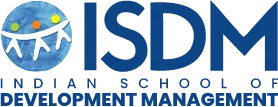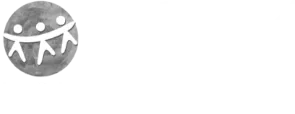Thanks to AI and big brother on the watch, my first-hand experience with perimenopausal symptoms opened the floodgates of information across channels. The overload of facts, myths, and hacks left me bedazzled! But it was one line from my gynaecologist that set me thinking:
“Kakul, don’t give up on your A-game. Don’t let your brain say slow down; keep up the learning curve and try the latest technology, tools, and books.”
Hmmm… I went back to check the facts, myths, and hacks—only to find little about how perimenopause affects women in leadership or how many fall off the ladder due to the hormonal changes and career impact of this phase. Instead, I was hit with alarming statistics:
- A significant number of women in India leave the workforce after the age of 40, often due to eldercare responsibilities, career stagnation, or hitting the glass ceiling.
- Women’s representation in leadership sharply declines as they climb the corporate ladder: from 27-29% at entry level to 20.1% at director level, 17.4% at vice president level, 15.3% in C-suite positions, and just 15% on boards.
Is Perimenopause the Elephant in the Boardroom?
As we analyse the narratives, data studies, and policies driving female leadership and representation, are we overlooking the role of perimenopause? The chatter in leadership circles and community groups reinforced a critical question: Does perimenopause affect women in leadership, and are we doing enough to address it?
There is no shortage of discussions on the unique challenges women face in leadership. However, perimenopause—which typically occurs in women in their 40s and 50s—coincides with their peak career years, adding another layer of complexity.
As I navigated fluctuating hormone levels and their symptoms—brain fog, hot flashes, mood swings, sleep disturbances, and cognitive changes—I experienced firsthand how mental health in women’s leadership is affected. Terms like ‘imposter syndrome’ and ‘acceptance’ took on deeper meaning. The inadequacy of the medical support system amplified the situation—one doctor even recommended a neurological exam when I mentioned brain fog!
For women in high-stakes leadership roles, these symptoms can complicate professional and personal lives to the extent that they feel forced to exit the workforce altogether. As my gynaecologist advised, “Don’t exit; it’s difficult to get back.”
Shattering the Stigma of Menopause in Corporate Leadership
Initially, I hesitated to discuss my health, fearing vulnerability would be perceived as weakness. But I soon realized that acknowledging and addressing these challenges openly not only helped me manage them better but also empowered others in my organization to do the same. Transparency and self-care became my guiding principles.
Coco Chanel once said, “The most courageous act is still to think for yourself. Aloud.”
Confidence and self-expression are critical in professional life, especially during this phase. I found my personal armour in my red lipstick and my yellow dress, symbolic reminders of my resilience. More importantly, I built a structured support system:
- Implementing self-care strategies: Regular exercise, mindfulness, and setting realistic boundaries helped me manage menopause symptoms at work.
- Building a network: Surrounding myself with trusted colleagues, mentors, and progressive male allies fostered a culture of understanding.
- Engaging in leadership communities: Groups like ‘Women on Boards’ provided invaluable camaraderie and professional support.
Redefining Strength in Leadership
Sheryl Sandberg once said, “You will be defined not just by what you achieve, but by how you survive.”
Perimenopause redefined my perception of strength. It’s not just about powering through challenges but also about adapting, embracing vulnerability, and showing compassion to oneself and others. It is also an opportunity for growth and self-discovery. It’s about keeping your A-game strong, taking on challenges, being resilient, finding your purpose, and, most importantly, loving yourself.
By embracing this journey with openness and resilience, we can continue to lead effectively and inspire others to do the same. If you’re a woman leader navigating perimenopause, I encourage you to share your story and seek support. Let’s break the stigma, redefine leadership, and work for more women on boards!




